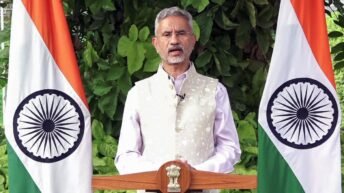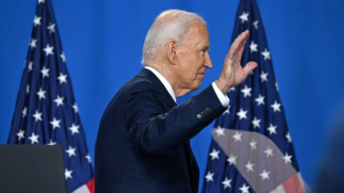|
Listen to article
Getting your Trinity Audio player ready...
|

Every year 26th of July is observed as Kargil Vijay Diwas. It is an important landmark in the history of India, and yet another occasion to honour the brave Indian soldiers who sacrificed their lives to ensure India’s victory over Pakistan in the Kargil War, which took place between May and July 1999.
The day marks the victory of Indian soldiers in capturing the mountain heights occupied by the Pakistani Army in the Kargil region of Jammu and Kashmir.
The conflict started when the Pakistani troops crossed the Line of Control (LoC) and occupied strategic positions in the Kargil district of Jammu and Kashmir. About 200 km away from Srinagar, Kargil is also important for India due to the fact that the national highway (NH 1) connecting Srinagar to Leh and Siachen glacier passes through Kargil.
However, despite being strategically important, Kargil itself was the actual cause of the conflict. It was Siachen, the highest battleground on earth over 20,000 ft. in height. The 1999 Kargil War was an attempt to constrain the supply route to Ladakh and Siachen. According to analysts, one of the reasons behind the Kargil War was the belief that India would withdraw from Siachen if Pakistan agreed to withdraw from Kargil.
Significantly, the Simla Agreement in 1972 did not clearly mention who controlled the glacier. It merely stated that the Cease Fire Line (CFL) terminated at NJ9842 at the foot of the Siachen Glacier. It was presumed that neither India nor Pakistan were interested in fighting over the cold and barren region.
However, the Pakistani generals in Rawalpindi unknowingly triggered the conflict by planning to take over strategic posts in the glacier region as part of Operation Ababeel. But their top-secret plan backfired when they contacted a supplier in London and ordered extremely high-altitude survival tents, boots and jackets for their armed force personnel. However, what they did not anticipate was that the supplier who also sold equipment to the Indian Army let the cat out of the bag to the Indians who ordered double the number of kits. Having acquired the kits needed for operations in Glacier the Indian Army launched Operation Meghdoot in 1984 and rushed nearly 300 Ladakh Scouts and Kumaon Regiment troops to occupy key heights in the Siachen before the Pakistanis got there. This led to intense fighting and heavy casualties on the glacier.
Over the next three years, Pakistan Army made several attempts to seize the heights controlled by the Indian soldiers overlooking the passes. Finally, their persistence paid off as they managed to capture a feature named “Qaid Post” after Mohammad Ali Zinah overlooking Bilafond La. However, their victory was short-lived as the Indian soldiers re-captured “Qaid Post” — the highest peak in the Siachen Glacier area located at a height of 21,000 ft. For his act of bravery Subedar Bana Singh was awarded the Param Vir Chakra – India’s highest gallantry award and the post was renamed Bana Post in his honour.
Ironically, the brunt of Pakistan’s defeat was borne by Brig Pervez Musharraf, the brigade commander of the newly raised brigade of the Special Services Group (SSG). Originally commissioned in the regiment of artillery, Musharraf was personally chosen by then-President and Chief of Army Staff General Zia-ul-Haq to lead the Pakistan Army operations in Siachen because of his wide experience in mountain and arctic warfare. As the Pakistani Brigade Commander Musharraf commanded the assault at Bilafond La which was beaten back.
Accordingly, the Indian Army soldier captured all the main passes and heights of the Saltoro Ridge in Siachen in the mid-80s early 90s.
Even today, Pakistan’s defeat in Siachen is seen as a major military setback by the Pakistani generals who view the Siachen glacier as their land stolen by India. Former Pakistani Prime Minister Benazir Bhutto went to the extent of saying that the Pakistan Army is “fit only to fight its own citizens”.
After Naib Subedar Bana Singh and four men captured the 21,153-foot high “Quaid Post” and renamed it “Bana Top”, Bhutto publicly made a mockery of the Pakistani generals who failed to defend Pakistani territory and asked them to wear bangles if they cannot fight on the Siachen glacier.
Siachen was a thorn in Musharraf’s flesh as he had commanded the Special Services Group (SSG) troops and led several unsuccessful attempts to capture the Indian posts in this area.
Hence, one of the first things that Musharraf could think of immediately after becoming Chief of Army Staff was to seek revenge from India and re-capture Siachen. Musharraf is said to have prepared a blueprint of the attack in October 1998 but it was shot down.
As Pakistani Lieutenant General (retd) Shahid Aziz writes in his book ‘Ye Khamoshi Kab Tak’ after becoming chief of Army staff, Musharraf planned the Kargil misadventure along with his second in command Lt Gen Mohammad Aziz Khan, Lt Gen Mahmud Ahmad the General Officer Commanding of the Pakistan 10 Corps, and Major Gen. Javed Hasan, General Officer Commanding of the Force Command Northern Area (FCNA) deployed in Pakistan occupied Gilgit-Baltistan.
No one else in the Pakistan Army, Air Force, Navy, Inter-Services Intelligence (ISI) and even the then Prime Minister, Nawaz Sharif had a clue about the plan. Even the then Director General of Military Operations (DGMO) Lt Gen Tauqir Zia was not in the picture and came to know about it later. Even the other corps commanders and principal staff officers were kept in the dark.
The idea behind the top-secret operation code-named Operation Koh Paima was to seek revenge against India’s capture of more than 1000 square miles of Siachen Glacier in 1984 which gave India an unparalleled edge over both China and Pakistan. Pakistan wanted to take revenge and Kargil provided the right opportunity as both armies used to vacate their posts on the Line of Control (LOC) during winters and re-occupy them in summers.
Hence, Musharraf and his cronies thought of capturing Kargil and using it to make India return the posts captured in Siachen. So after the Indian troops vacated their posts during winter, Pakistani infiltrators captured around 150 Indian posts in Kargil without anyone in India or Pakistan having a clue about it.
Musharraf himself was so charged up that he is reported to have personally camped in the Pakistani Zikria Mustaqar Post across the Line of Control to oversee the operation.
But the Chinese tapped his phone during a state visit to China and passed on the information to the CIA which in turn alerted the Indians.
The Indian Armed Forces launched “Operation Vijay” to recapture the occupied territories. This led to intense combat in the rugged and harsh mountain terrain.
After nearly three months of fierce fighting, the Indian troops successfully pushed back the Pakistani forces and reclaimed the territories they had captured. On July 26, 1999, the Indian Army officially declared that they had recaptured the last of the occupied territories. Since then this day has come to be known as Kargil Vijay Diwas or Victory Day to pay homage to the heroes who displayed unparalleled courage and determination in defending the country’s sovereignty.
According to Pakistani major general (retd) Abdul Majeed Malik the Kargil was a “total disaster”. According to him, active-duty serving officers and soldiers not “Mujaheddin” took part in the operation.
Interestingly the then Pakistan Chief of Naval Staff Admiral Fasih Bokhari is believed to have called for court-martial proceedings against General Musharraf.
Even Former prime minister and leader of opposition in the parliament Benazir Bhutto called the Kargil War “Pakistan’s greatest blunder”.
Likewise, many ex-military and ISI officials believe that “Kargil was a waste of time” and did not have any result on the larger issue of Kashmir.
Pakistan Army’s Lieutenant-General Ali Kuli Khan described Pakistan’s Kargil misadventure as “flawed in terms of its conception, tactical planning and execution”. According to him, the plan ended up in “sacrificing so many soldiers” and was a bigger disaster than the East Pakistan tragedy”.






Add comment